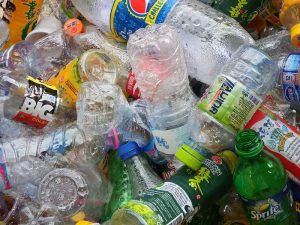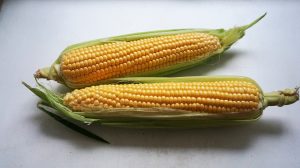
Image: Bristol Green Party
We are at the point where our world is so heavily dependent on plastics we can’t function without them. Therefore, it shouldn’t come as a huge surprise that according to Statista, the world’s plastic production was a whopping 348 million tons in 2017. So why talk about plastics? Well let’s find out.
It’s very difficult to ignore the number of climate change movements happening all around the world recently; the effects of global warming has been evident over the past decade and it’s crucial to discuss the biggest contributing factor that can be seen in the video below: greenhouse gases.
Greenhouse gases are gases in our atmosphere that trap heat and overtime, make the earth a gigantic oven. The more greenhouse gases we have, the warmer our earth will get and more severe damage done to different environments and their ecosystems. Some common greenhouses people may be familiar with are: carbon dioxide, methane and water. To bring it all together, the number one source of greenhouse emissions is the human activity of burning fossil fuels.
Industries commonly use what we call petroleum-based plastics when creating products. Petroleum-based plastics are typically made from carbon atoms and do not degrade naturally. Although some petroleum-based plastics are “recycled”, the reality is that this process also isn’t very efficient. A study done in 2017 by Roland Geyer stated that while 9% of the plastic produced was being recycled and 79% were sitting in landfills or natural environments, 12% was being incinerated. This is one way petroleum-based plastics contribute to burning of fossil fuels and release carbon dioxide into the air.
So why does this matter?
There are alternatives to using plastics! In fact, there are many that are being researched. Bioplastics, or often referred to as bio-based plastics, are ones that are made not from petroleum but from plants or other biological materials. These release significantly less greenhouse gases into the air as opposed to petroleum-based plastics.
Common sources of bioplastics are plants like corn or sugarcanes where they extract sugars to change into polylactic acids (PLA) or microorganisms which produce polyhydroxyalkanoates (PHA). These chemicals are then made into polymers, which are long chains after going through chemical reactions.
However, the full transition to bioplastics face some challenges. These bioplastics are not cost-efficient at the moment, especially to industries that are looking to profit. Petroleum-based plastics are much more affordable for production and usage but bioplastics, being a relatively new industry, are not fully developed which increases the cost of production. There are also concerns whether bioplastics can cause more harm than good environmentally because they are still relatively new.
But give it some time, resources and support then the bioplastic research will develop more and more until it becomes flawless. A recent study done in 2019 by Mohammad Asif Ali shows progress with bioplastics as he explained a new mechanism to create higher performance plastics. Nothing starts off perfect, and the research on bioplastics is definitely not an exception.
-Clara Kim


5 responses to “Bioplastics, Can They Help?”